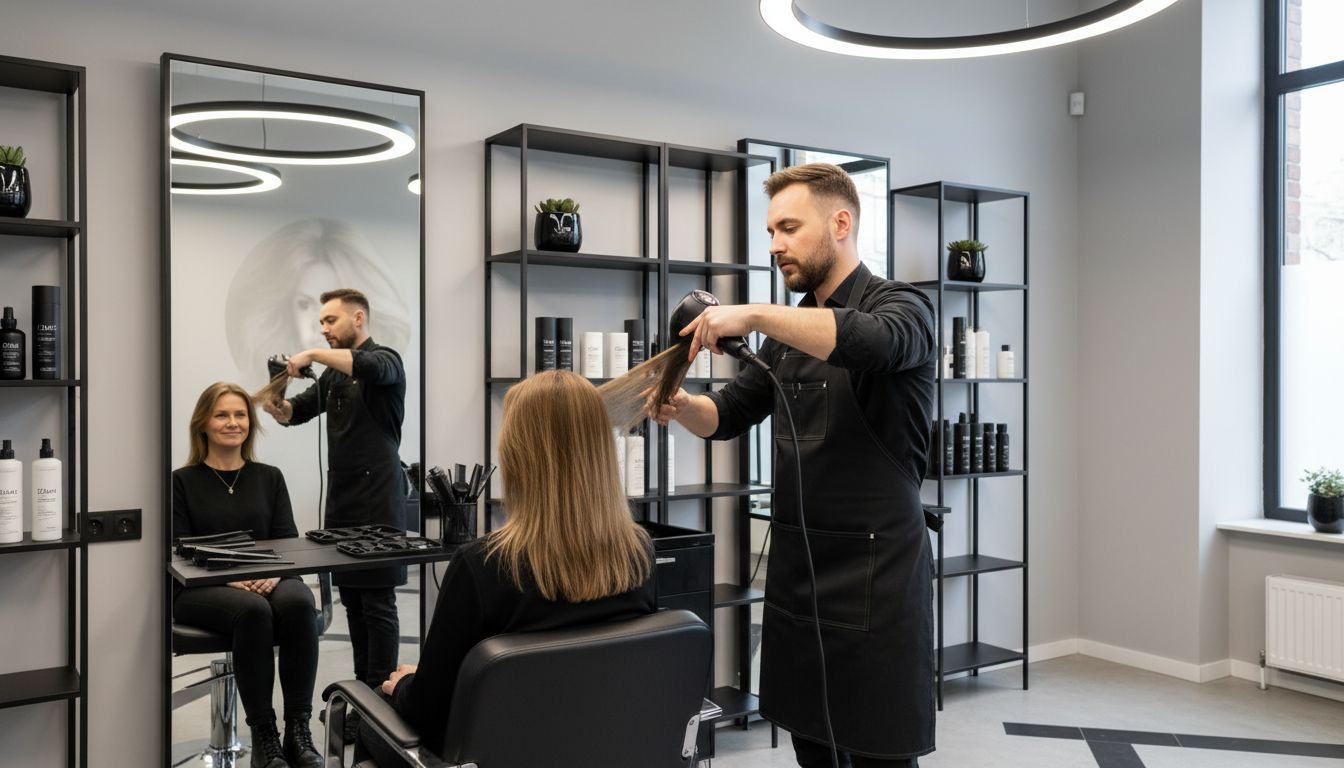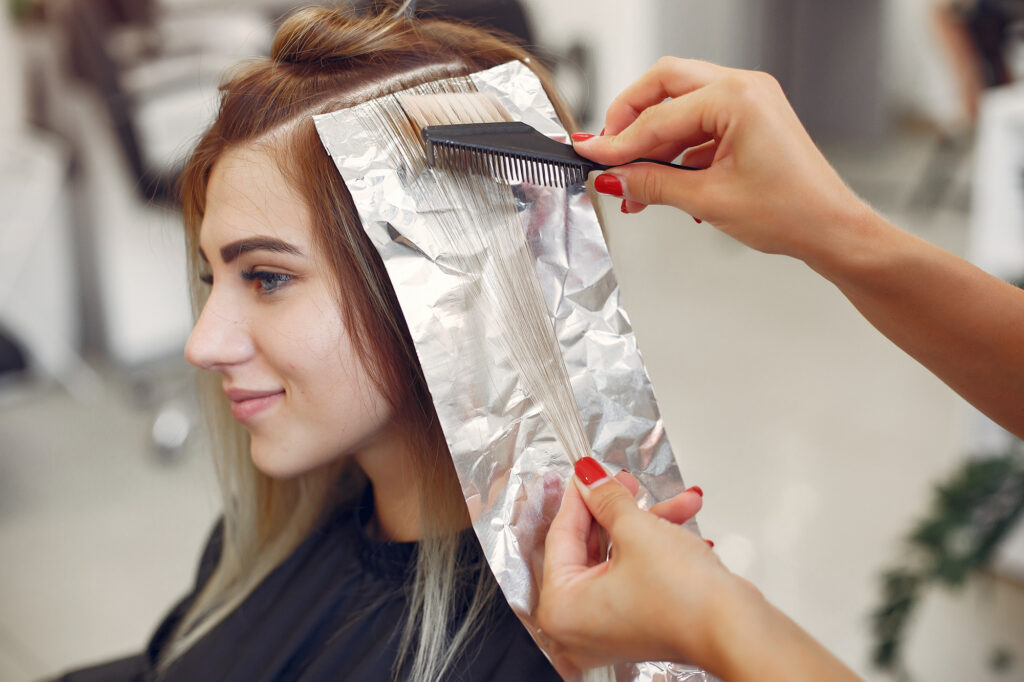Dealing With Hair Loss: Complete Guide and Solutions

Did you know that over 80 million adults in the United States experience noticeable hair loss? Concerns about thinning hair often go far deeper than appearance and can impact daily confidence. With myths and confusion surrounding causes, treatments, and prevention, getting accurate information has never mattered more. Discover how understanding the real science and options behind hair loss can empower you to make informed decisions about your hair health.
Table of Contents
- Defining Hair Loss and Common Misconceptions
- Types and Causes of Hair Loss
- Latest Medical and Cosmetic Treatments
- Salon Approaches to Thinning Hair
- Preventing Hair Loss and Managing Risks
- Common Mistakes to Avoid With Hair Loss
Key Takeaways
| Point | Details |
|---|---|
| Understanding Hair Loss | Hair loss, or alopecia, is not solely an aging concern; it involves various types and causes influenced by genetic, hormonal, and environmental factors. |
| Treatment Options | Effective solutions range from FDA-approved medications to advanced therapies like PRP and follicular unit transplantation, highlighting the need for professional consultation. |
| Prevention Strategies | Maintaining a balanced diet, managing stress, and avoiding harsh treatments are crucial for reducing hair loss risks and promoting scalp health. |
| Avoiding Misconceptions | Common myths, such as associating hair loss exclusively with age or gender, should be addressed to foster a better understanding of the condition and its treatment options. |
Defining Hair Loss and Common Misconceptions
Hair loss isn’t just a cosmetic concern – it’s a complex biological process that affects millions worldwide. Alopecia, the medical term for hair loss, encompasses a range of conditions that impact hair growth and retention. According to Harvard Health, hair loss can result from multiple factors including medical conditions, medications, and stress.
Contrary to popular belief, hair loss isn’t exclusively an aging issue. The JAMA Network classifies hair loss into two primary categories: scarring and nonscarring alopecia. Androgenetic alopecia, the most prevalent form worldwide, demonstrates that genetic predisposition plays a significant role beyond age or personal hygiene.
Key misconceptions about hair loss include:
- Hair loss only happens to older people
- Poor nutrition is always the primary cause
- Hair loss is exclusively a male problem
- Wearing hats causes baldness
- Once hair falls out, it can never regrow
Understanding the nuanced science behind hair loss requires recognizing its multifaceted nature. Factors like hormonal changes, autoimmune disorders, nutritional deficiencies, and genetic inheritance can all contribute to hair thinning or complete hair loss. Professional consultation helps decode your specific hair loss pattern and develop targeted treatment strategies.
Types and Causes of Hair Loss
Hair loss is far more complex than a simple genetic predisposition. Journals Research reveals multiple distinct types of hair loss, each with unique underlying mechanisms that impact hair growth and retention. Androgenetic alopecia, the most common form, represents just one pathway in a nuanced landscape of hair loss conditions.
According to the Journal of the Mississippi State Medical Association, hair loss can be categorized into several primary types:
- Androgenetic Alopecia: Genetic hair loss characterized by progressive thinning
- Alopecia Areata: An autoimmune condition causing patchy hair loss
- Telogen Effluvium: Temporary hair shedding triggered by stress or physiological shock
- Traction Alopecia: Hair loss caused by repeated tension on hair follicles
- Scarring Alopecia: Permanent hair loss due to follicle destruction
The underlying causes of hair loss are multifaceted, ranging from genetic predispositions to environmental triggers. Hormonal changes, nutritional deficiencies, medical conditions, and medications can all contribute to hair thinning. While some forms of hair loss are temporary and reversible, others require specialized medical intervention to manage effectively. Professional diagnostic assessment remains crucial in determining the specific type and developing a targeted treatment strategy.
Here’s a comparison of the primary types of hair loss and their key characteristics:

| Type of Hair Loss | Main Cause | Typical Pattern | Potential for Regrowth |
|---|---|---|---|
| Androgenetic Alopecia | Genetics, hormones | Gradual thinning | Possible with treatment |
| Alopecia Areata | Autoimmune condition | Patchy hair loss | Often spontaneous |
| Telogen Effluvium | Stress, illness, shock | Widespread shedding | Usually full recovery |
| Traction Alopecia | Hair tension, styling practices | Based on stress location | Reversible if addressed |
| Scarring Alopecia | Follicle destruction, inflammation | Permanent bald patches | Rare, only early stages |
Latest Medical and Cosmetic Treatments
The landscape of hair loss treatments has dramatically evolved, offering hope for individuals experiencing hair thinning and baldness. JDC Online Research highlights several cutting-edge medical interventions that provide promising solutions for hair restoration.
FDA-Approved Medications represent the first line of pharmaceutical intervention:
- Minoxidil: A topical treatment stimulating hair growth and preventing further loss
- Finasteride: An oral medication that blocks testosterone conversion, slowing hair loss progression
Beyond traditional medications, Hilaris Publisher outlines emerging advanced treatments that are revolutionizing hair restoration:
- Platelet-Rich Plasma (PRP) Therapy: Uses patient’s own blood plasma to stimulate hair follicle regeneration
- Low-Level Laser Therapy: Employs specialized light wavelengths to encourage hair growth
- Follicular Unit Transplantation: Precise surgical technique moving healthy hair follicles to thinning areas
Modern hair restoration isn’t just about medical interventions.
Personalized treatment plans now consider individual genetic profiles, underlying health conditions, and lifestyle factors. Consulting with specialized professionals can help determine the most effective strategy, combining medical treatments, nutritional support, and potential cosmetic solutions to address hair loss comprehensively.
Salon Approaches to Thinning Hair
Professional hair stylists have developed sophisticated techniques to address thinning hair, transforming what could be a challenging experience into an opportunity for creative styling. Harvard Health emphasizes the critical role of professional styling in minimizing the visual impact of hair loss through strategic haircuts and volumizing techniques.
Styling Strategies for Thinning Hair include:
- Precision cutting to create the illusion of fuller hair
- Strategic layering to add volume and movement
- Texturizing techniques that maximize hair appearance
- Customized color treatments to create depth and dimension
JAMA Network highlights additional cosmetic solutions for managing hair loss, such as professional-grade wigs, hairpieces, and scalp micropigmentation. These advanced techniques offer transformative options for individuals experiencing significant hair thinning.
When considering salon approaches, consulting with a volume-boosting haircut specialist can provide personalized solutions tailored to your specific hair texture and loss pattern. Professional stylists can recommend cutting techniques, styling methods, and potential camouflage strategies that restore confidence and create a natural, full-bodied look.
 The key is a personalized approach that considers your unique hair characteristics, lifestyle, and aesthetic preferences.
The key is a personalized approach that considers your unique hair characteristics, lifestyle, and aesthetic preferences.
Preventing Hair Loss and Managing Risks
Harvard Health underscores the importance of proactive strategies in managing hair loss risks. Understanding that prevention begins with comprehensive lifestyle and health management is crucial for maintaining healthy hair growth and minimizing potential deterioration.
Key Preventive Measures for reducing hair loss risks include:
- Maintaining a balanced, nutrient-rich diet
- Managing stress through regular exercise and meditation
- Avoiding harsh chemical treatments
- Protecting hair from excessive heat styling
- Regular scalp and hair health assessments
JAMA Network recommends a holistic approach to risk management, emphasizing the significance of identifying underlying causes such as hormonal imbalances or nutritional deficiencies. Early intervention can dramatically slow progression and potentially reverse some forms of hair loss.
Understanding your personal risk factors is essential. By learning how to style fine hair naturally, you can minimize damage and create protective styling strategies. Professional consultations, comprehensive health screenings, and personalized hair care routines form the cornerstone of an effective hair loss prevention strategy. The goal is not just managing symptoms, but addressing root causes and maintaining overall hair and scalp health.
Common Mistakes to Avoid With Hair Loss
Harvard Health warns that one of the most critical mistakes individuals make is self-diagnosing hair loss without professional medical guidance. Assuming all hair loss is the same or attempting to treat it with over-the-counter solutions can lead to ineffective or potentially harmful approaches.
Common Hair Loss Mistakes to avoid include:
- Ignoring underlying medical conditions
- Using unverified treatment methods
- Delaying professional consultation
- Choosing hairstyles that cause additional stress on hair follicles
- Neglecting nutritional and lifestyle factors
JAMA Network emphasizes the dangers of postponing professional intervention, highlighting that early diagnosis and treatment can significantly impact hair loss progression. Understanding that each hair loss scenario is unique requires a personalized, professional approach.
Learn how to protect your hair’s health by exploring techniques like understanding texturizing hair techniques, which can provide insights into gentler styling methods. Professional guidance, comprehensive medical assessments, and a proactive mindset are your best defenses against potential hair loss complications. Remember, what works for one person might not work for another, making personalized professional advice crucial.
Restore Confidence With Expert Hair Solutions at Joel C Ma Hair Studio
Struggling with hair loss can be overwhelming and impact your confidence deeply. Whether you face thinning hair, androgenetic alopecia, or want to explore styling options that bring back volume and life to your hair, understanding the right approach is key. The guide you just read highlights the importance of personalized treatments and professional care to effectively address hair loss concerns.

Take control of your hair journey today. At Joel C Ma Hair Studio, our seasoned hair artists specialize in customized haircuts and styling techniques that enhance volume and create the illusion of fuller hair. We combine artistry with care, making sure your individual hair needs and patterns of hair loss are fully respected. Discover professional strategies to manage your hair loss while maintaining style and confidence. Don’t wait until hair loss worsens. Schedule a personal consultation now by visiting our website and start transforming your look with expert support.
Frequently Asked Questions
What are the main types of hair loss?
The main types of hair loss include androgenetic alopecia (genetic hair loss), alopecia areata (patchy hair loss due to autoimmune conditions), telogen effluvium (temporary shedding triggered by stress or shock), traction alopecia (caused by hair tension), and scarring alopecia (permanent hair loss due to follicle destruction).
What are the most effective treatments for hair loss?
Effective treatments for hair loss include FDA-approved medications like minoxidil (topical treatment) and finasteride (oral medication). Additionally, advanced treatments such as platelet-rich plasma (PRP) therapy, low-level laser therapy, and follicular unit transplantation provide promising solutions for hair restoration.
How can I prevent hair loss?
To prevent hair loss, maintain a balanced, nutrient-rich diet, manage stress through regular exercise and meditation, avoid harsh chemical treatments, protect hair from excessive heat styling, and schedule regular scalp and hair health assessments.
What common mistakes should I avoid when managing hair loss?
Common mistakes to avoid include ignoring underlying medical conditions, using unverified treatment methods, delaying professional consultation, choosing hairstyles that stress your hair follicles, and neglecting nutritional and lifestyle factors.





